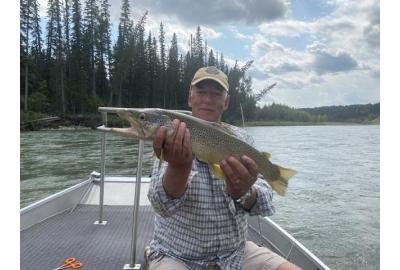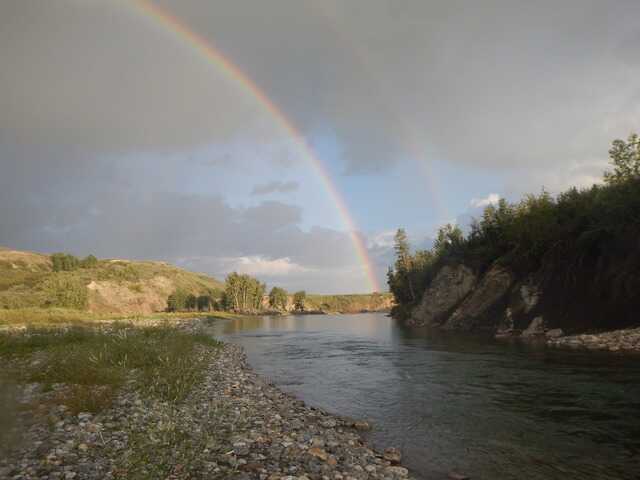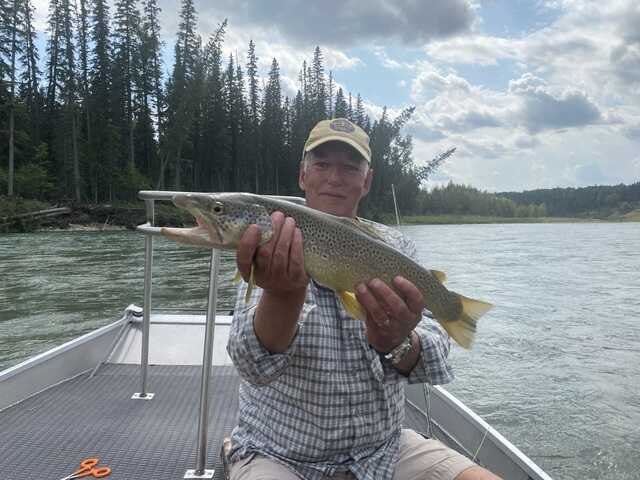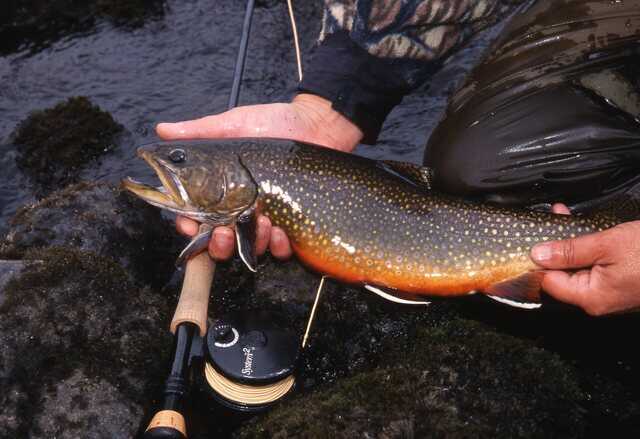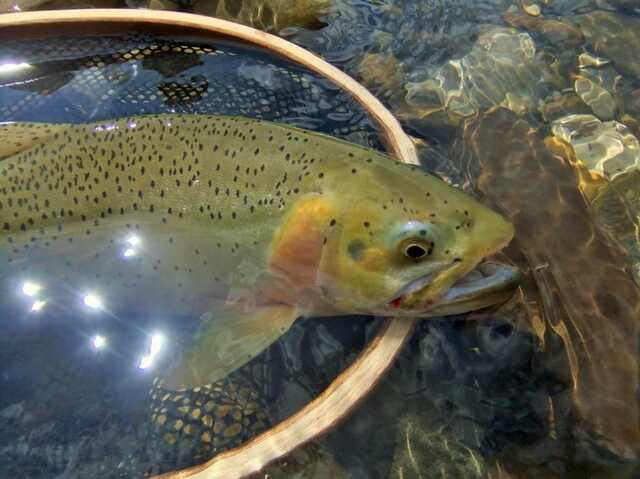Most of us are creatures of habit, and our tendency to fall back on the tried and trusted extends to our fishing habits as much as it does the rest of our lives. Do you find yourself fishing the same streams and the same reaches of those streams year after year? I know I’m guilty of that behaviour. It’s not surprising, I suppose, to keep returning to those waters where we’ve enjoyed success; after all, most of us have limited fishing time and it’s only natural that for those precious few hours and days we’d go to those places where we’ve previously enjoyed success.
Unfortunately, there are unintended consequences to that behaviour. Even the best waters become less interesting over repeated visits. And, invariably, they become more popular and, hence, more crowded over time.
I’ve had to force myself to adopt more of an exploratory mindset as you can spend a lot of fruitless hours that way. But every so often you discover a new stream, or a new section of a stream you’ve fished for years, that produces, and it makes all the exploring worthwhile.
The fishing world is rife with rumours. You’ve heard many, no doubt. Invariably they arrive as whispered promises of streams with trout as long as your arm and not another angler in sight. Most rumours you discard out of hand—if something sounds too good to be true, it probably is. But every now and then you hear one that’s repeated often enough by different people in different ways that you start to think there may be a kernel of truth. Last summer one of those had been bouncing around in my head for so many years that a couple friends and I determined that we were going to check it out for ourselves. The result was one of the best days of brown trout angling I can recall ever having experienced. I won’t tell you how many we caught as you’d probably just think it was a fish tale.
The lesson for me was that there still are streams and stretches of streams that haven’t been widely advertised that hold good numbers of good trout.
We’re fortunate to have a plethora of helpful information at our disposal these days that can help us locate new water. It begins with Google Maps, which provides satellite imagery of every nook and cranny in the backcountry. Detailed inspection reveals not only streams and sections of streams off the beaten path, but also the cutlines, trails and abandoned roads that make access easier.
Publications like the annual Barry Mitchell’s Alberta Fishing Guide offer no shortage of data about virtually every stream reach in that province, but also access points and predicted trout populations—don’t assume that because it’s available to every Tom, Dick and Harry that all the “good” spots are fished regularly. They’re not.
Meanwhile, joining any of the online fishing groups can provide a ton of insider information otherwise not available. You’ll be surprised at the willingness of some anglers to help their brethren discover new trout waters.
Lastly, don’t ignore new sections on some of the rivers and streams you already fish. The most popular sections are usually just that because access there is easiest. Identifying out-of-the-way reaches can lead to wonderful stretches that seldom see much rod pressure. I’ve fished Alberta’s Raven River for years, often in the same stretches that you probably do; despite the attention they receive they produce, and I find that comforting. With the help of a friend who introduced me to a local landowner, however, I now regularly fish a stretch of the Raven that always gives up a few browns, yet I’ve never encountered a single other angler there.
On popular streams and rivers, most anglers are drawn to the largest, deepest pools. That’s not surprising, as they generally hold fish throughout the angling year. But in your rush to get to the next big pool you’re likely walking right past, or through, productive fish-holding water. That’s become apparent to me on a number of streams, and I now make a concerted effort to quickly fish the “poor” water between those honey holes. On more occasions than you’d imagine I’ve picked up fish, including good fish, in water I’d skipped through on previous visits; trout aren’t always where we expect them to be.
Most often we enter a stream at a natural access point, whether below a bridge, at a road crossing, or where a cutline or trail intersects the water. For many anglers, the tendency is to jump in, walk upstream 50 or 100 metres, and begin fishing up. Many more experienced anglers, meanwhile, will do just the opposite, choosing to walk downstream for several hundred meters or more before turning around and fishing back to the access point, rightfully believing that section sees less fishing pressure. Meanwhile, back at the access point, trout are swimming around in lazy oblivion.
I was reminded of this in August on my way home from an afternoon on Stauffer Creek. I stopped at a bridge over the creek to figure out what was rattling in the back of my truck. Standing on the bridge, movement below caught my eye, and over the course of the next ten minutes I was able to identify three different brown trout feeding contentedly in the bridge pool, all of them bigger than any fish I’d hooked that afternoon.
Stream crossings add structure, whether we’re talking bridge abutments, perched culverts or other impediments, and trout love structure. All too often we ignore these locations, figuring everyone else has already scoured those waters. Don’t make that assumption! Take a couple minutes and fish the obvious spots.
One of my early fishing mentors, Barry Mitchell, taught me the importance of, upon arrival at a stream, resisting the urge to jump straight into the water and begin casting to likely-looking spots. Before stepping into the stream, Barry would always find a bankside tree, plop himself down in the shade, and watch the water for a good ten minutes. I was amazed at how much you could learn in that short time. Feeding fish would eventually show themselves, revealing whether they were active along the banks, in the pools or in the midstream runs, and whether they were active on top or just below the surface. You’d also quickly discover what they were feeding on, making your subsequent fly selection a whole lot easier.


Take time to watch the water before beginning to fish; you’ll be amazed at what you can learn.

